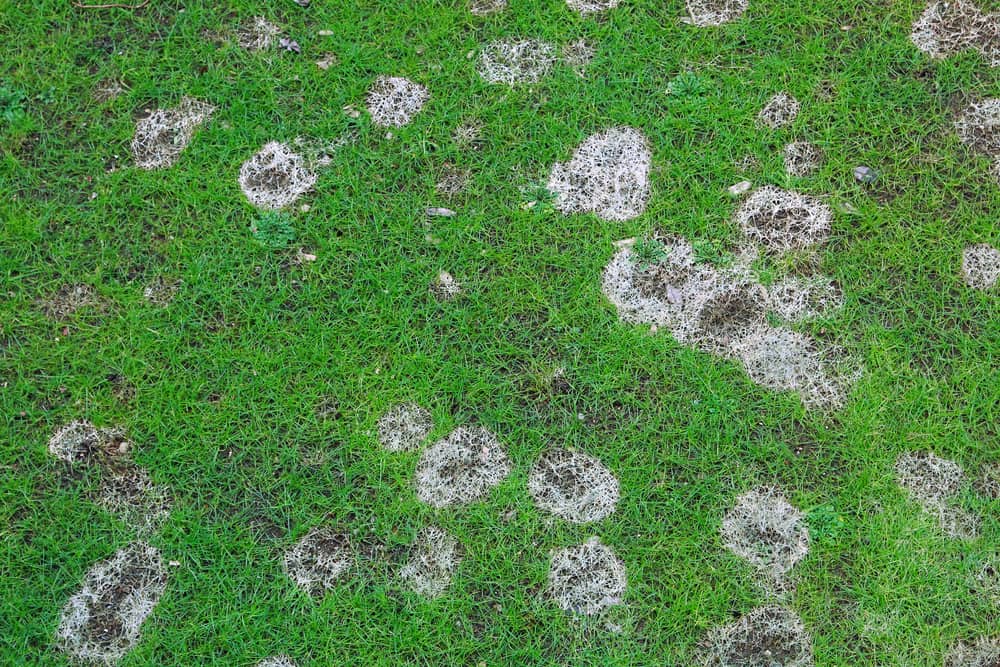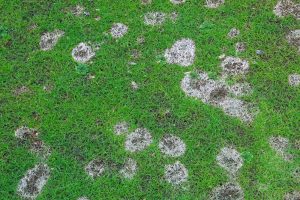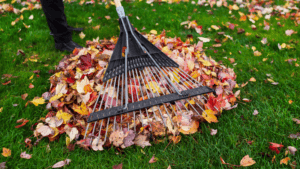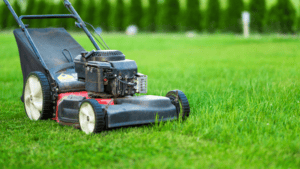Lawn diseases can be scary any time of the year, but summer lawn diseases can be especially damaging. The key is preventing these problems before they start by maintaining a healthy lawn throughout the year and understanding the situations that lead to these predicaments.
Combining awareness and prevention helps ensure these summer diseases don’t become a problem for your lawn.
Diseases start with bacteria, fungi and other microscopic organisms – usually already in your lawn – are allowed to flourish because of the right environmental conditions. Luckily, many of these diseases are recognizable on sight, and if you are thorough in the maintenance of your lawn you can prevent or quickly treat them.
Here are three of the most common lawn diseases to be on the outlook for and how to fight against them.
Brown patch
Moist grass combined with hot and high-humid weather – especially when a lawn has been over-fertilized – creates an ideal situation for brown patch (rhizocotonia blight).
Brown patch looks like “dark, water-soaked grass turning into browned-out circular areas several inches to several feet in diameter,” according to yardcare.com. If the turf is short – like on a golf course – a 2-inch gray ring may outline it in the morning.
It is recommended it be treated by watering, ” deeply but infrequently, mowing high, removing excess thatch and improving aeration and drainage.”
Dollar Spot
This lawn disease is named because the spots are about the size of a silver dollar. When lawns are cut close and the turf lacks enough nutrients, they’ll appear during heavy dew periods. It’s most likely to strike during heavy periods of dew.
In the morning, you might see something resembling a cobweb. Or it can appear as “mottled, straw-colored 4 to 6 inch wide patches on lawns with taller grass. Grass blades have light tan bands with reddish brown margins spanning across,” according to yardcare.com.
The key to preventing Dollar Spot is by making sure the soil has adequate nitrogen and potassium. Also, remove excess thatch, water deeply, and you might even remove morning dew by “dragging a hose across the lawn.”
Summer Patch
Summer patch starts as large, wilted, dark green circular areas and becomes a “straw-brown” color that becomes larger in diameter. It’s caused by Magnaporthepoae – a fungus that destroys grass roots. Sometimes the grass is actually infected prior to when the symptoms appear. For example, it may infect a lawn in spring but won’t be visible till the heat really dries out the lawn in summer.
The disease begins with patches of wilted or dark green grass that becomes brownish. It starts small but will increase and become a ring – sometimes described as resembling a “frogeye” because the inside is green while the outer ring is a dead brown.
Prevention is very important because treating the disease is difficult. Some prevention steps include:
- Don’t mow too low, keep it at 3 to 4 inches.
- Water deep (4 inches) and not too frequently.
- Don’t over-fertilize.
- Fungicides like Azoxystrobin, fenareimol and triphoanate-methyl will help reduce the problem to a manageable level. They should be applied in spring.
Keeping a healthy, beautiful lawn is often a matter of understanding and maintenance. If a disease does arise, be ready and pro-active, don’t wait till it gets out of hand and spreads, damaging more of your soil and lawn.
When you have questions or need help on your lawn care, Snappy’s Outdoor Equipment can help you in many ways. If your not sure what all we offer, check out our service area page! Or, check out our MVP program and how it helps save money and time.





